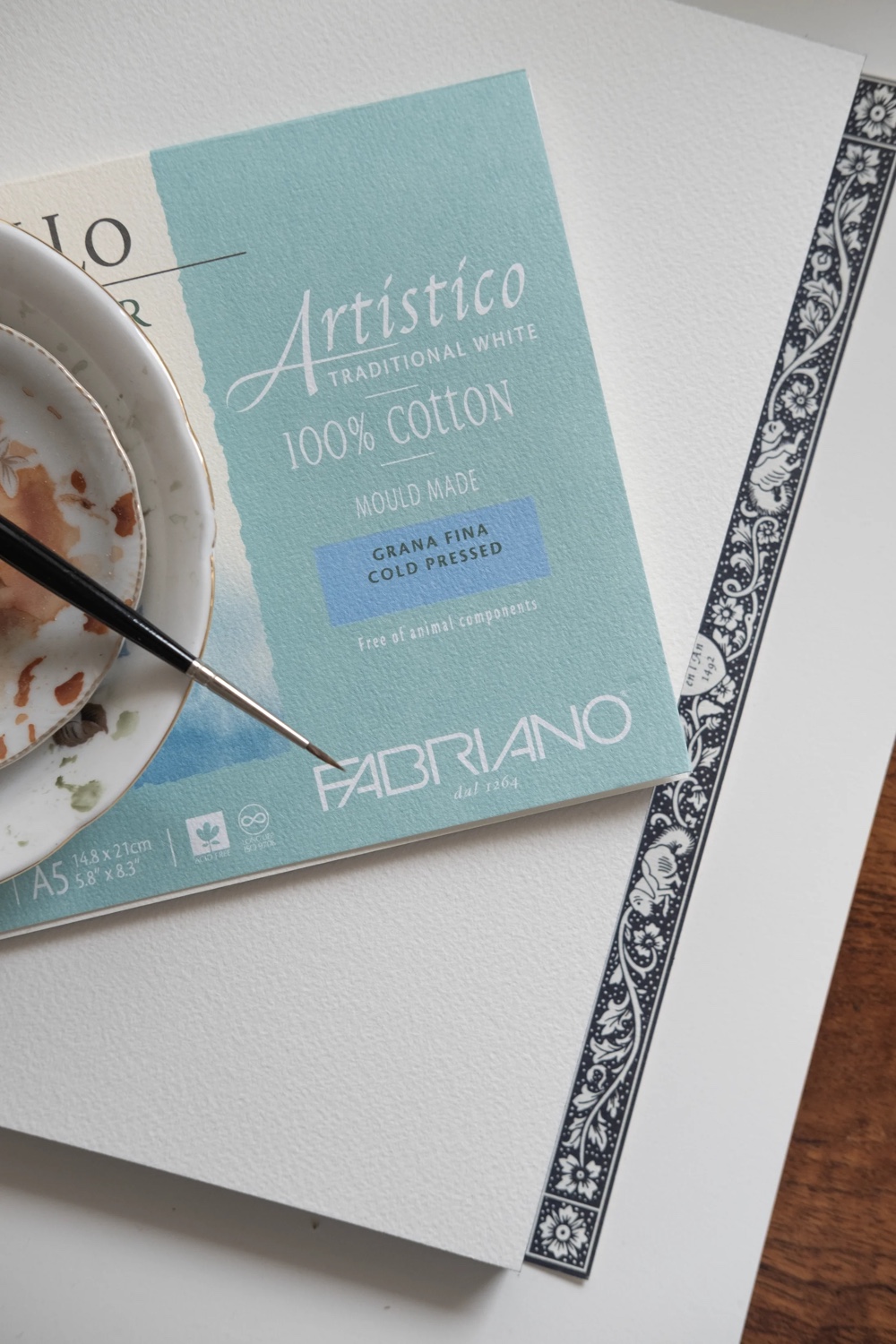
Choosing the ‘best’ watercolour paper

In this section, we will go through everything you need to know when choosing the right watercolour paper.
Section Objective:
Confidently choose the correct watercolour paper for your specific needs.
There are Five things to consider when choosing watercolour paper.
1. What is its composition? 100% cotton, bamboo fiber?
2. Is it Acid-Free?
3. What is the weight?
4. Hot vs cold pressed?
5. Sizing. Is it core or surface sized?
Paper Composition
Not everyone needs 100% cotton paper – especially if you’re getting started or practicing. Unless you have the extra money, I don’t think it would be wise to start with the best quality paper.
If you’re painting for an exhibition or to sell an original, then yes, you need the highest grade, but if you’re starting, it isn’t necessary.
The benefit of 100% cotton is that it is very forgiving. You can work the paper without worrying about it tearing. Wood fibre papers tend to tear much easier and you won’t be able to lift colour or blend excessively like you can with 100% cotton.
Wood fibers may also affect the way the colour reacts with the paper – your paint may dry more dully, or it might even dry saturated – cotton fiber drys more true to colour.
Acid Free
Acid-free paper is ideal for an exhibition or a final artwork because it won’t yellow or age as fast as acid paper. The acid-free paper is also called archival paper.
The archival paper must be acid-free, wood pulp-free, low metal and free from brighteners. Archival Paper has a lifespan of over 100 years.
Acidic paper, usually wood pulp paper, will turn yellow and brittle because the acid will chemically break down the fibres.
Usually, wood pulp paper is more acidic.
Best: 100% Cotton Rag, 100% Cotton Pulp
Mid: Cotton Wood Pulp Blend
Low: Higher Wood to Cotton ratio
Weight
I use 300gsm paper. The lowest I would go is 200gsm, for watercolour. Anything lower and you start to notice it won’t hold the water as well. GSM refers to the thickness of each sheet of paper. The lower the gsm, the more the paper will buckle as it dries.
A thinner paper might bleed through to the back and it will buckle and bend too much.
Printer paper is 80 gsm, and we all know what happens when water touches printer paper, it tears and buckles.
Drawing paper is around 150gsm, still too low for watercolour.
Best: 300gsm (600gsm if you’re very fancy)
Mid: 200gsm
Low: -140gsm

Sizing (absorbance)
Sizing does not refer to the size of the paper.
Rather, sizing refers to the paper’s level of absorbance. Traditionally, gelatin is used as sizing. Sizing limits how much of the liquid can be absorbed into the paper – the paint sits on top rather than disappearing into the depths of your cotton sheet. This also allows us to lift paint before it gets absorbed into the fibres.
Sizing affects these properties of watercolour paper:
– Absorbency
– Strength
– Color
Sizing can be done internally, externally or both.
Arches: Sized to the core with natural gelatin: a process exclusive to ARCHES®. ARCHES® is the only paper mill in the world to gelatin size its watercolour paper “to the core”. Even if it is soaked for a long time, the paper will still retain enough gelatin not to become too absorbent.
Fabriano: Our watercolour papers are free of animal gelatine or animal derivatives (except for the handmade Esportazione paper where we respect the original recipe). For the machine-made papers, we use polyvinyl alcohol, starch and/or other chemical ingredients.
Paper Texture
Hot vs cold pressed, is just a matter of personal preference. Most botanical artists use Hot-Pressed because it is smooth and you’re able to achieve more detail.
I love cold pressed and rough for botanical art, I think the texture gives the artwork a nice grainy effect.
Rough and Cold pressed are more difficult to use for botanical watercolour because the texture can make it difficult to get fine detail, but if you’re patient I think the end product is beautiful.
It depends on your preference and which style you’re going for.
Affiliate links to my fav’ papers:
100% Cotton
Acid Free
300gsm
Cold Pressed, HP & Rough
Gelatin sized “to the core
No OBAs (Optical brightening agents)
2. Fabriano Artisio
100% Cotton
Acid Free
Archival
300gsm
satin, soft grain, fine grain, coarse grain
Synthetic Internal and surface sizing
No OBAs (Optical brightening agents)
3. Saunders Waterford®
100% Cotton
Acid Free
Archival
300gsm
Cold Pressed, HP & Rough
Gelatine surface sized & Internally sized
No OBAs (Optical brightening agents)
© All Rights Reserved 2024 Cave Dwller